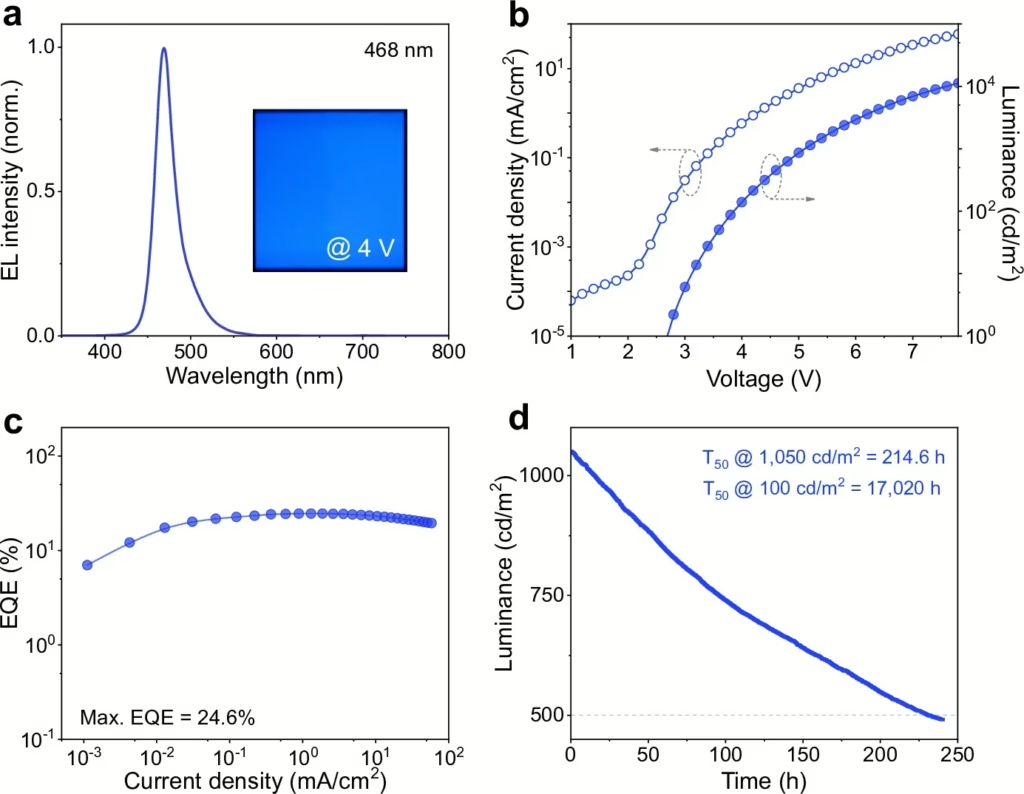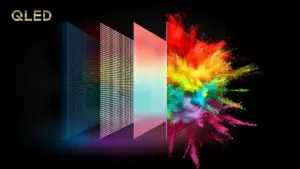Australian researchers have developed heavy-metal-free blue QLEDs that match or exceed the performance of their cadmium-based counterparts, potentially revolutionizing the display technology industry. With emissions at 460 nm, a narrow linewidth of 17 nm, and operational stability rivaling cadmium-based alternatives, these quantum dots are another step in the industry’s transition away from toxic materials. Durability tests showed the new quantum dots have an operational lifespan approaching 30,000 hours, representing a substantial advancement in creating environmentally friendly display solutions with practical longevity.
The breakthrough comes from scientists at Curtin University, led by Associate Professor Guohua Jia from the School of Molecular and Life Sciences. Their work addresses a persistent challenge in the field: producing vibrant blue light from QLEDs without using materials that pose risks to human health and the environment. The researchers engineered a new class of quantum dots using zinc, selenium, tellurium, and sulfur (ZnSeTeS) that emit pure blue light with an efficiency rate of 24.7 percent—among the highest ever recorded for blue QLEDs. This significantly outperforms previous cadmium-free alternatives in both functionality and safety.
“Our research team has developed a new type of quantum dot that matches or even outperforms traditional cadmium-based QLEDs, but in a safer and more sustainable way,” Associate Professor Jia said.
“Our quantum dots emit a pure and vibrant blue light with an impressive 24.7 per cent efficiency, which is among the highest recorded for blue QLEDs.
“They also last for nearly 30,000 hours, making them a promising step toward more durable and environmentally friendly display technology.”
The research team achieved this performance by developing an isoelectronic control strategy using congeneric sulfur coordinated with triphenyl phosphite (TPP-S). This approach allowed them to construct homogeneous ZnSeTeS quantum dots with pure-blue emissions and near-unity photoluminescence quantum yield.

According to the researchers, their success stemmed from meticulous fine-tuning of the quantum dot structure at the atomic level. This engineering process minimized defects that typically disrupt light-emitting capabilities. By focusing on uniformity within the crystal structure, the team enhanced both the lumen output and stability of the blue light.
The technical innovation involves TPP with low electron-donating capability promoting reactivity balance among anionic precursors, which favors the growth of uniformly composed quantum dots. Additionally, the acceptor-like sulfur with high electronegativity weakens hole localization of tellurium atoms by interfering with surrounding carriers, suppressing the formation of tellurium isoelectronic centers.
Associate Professor Jia emphasized that these findings extend beyond improving display panels, representing a paradigm shift in optoelectronics. Potential applications range from energy-efficient lighting solutions to advancements in augmented and virtual reality systems.
The research involved collaboration across multiple institutions, including Shanghai University, Jilin University, Chinese Academy of Sciences, Fudan University, and TCL Research. This international cooperation brought together diverse expertise to address both technological and environmental challenges.
Reference
Wu, Q., Cao, F., Yu, W. et al. Homogeneous ZnSeTeS quantum dots for efficient and stable pure-blue LEDs. Nature 639, 633–638 (2025). https://doi.org/10.1038/s41586-025-08645-4

